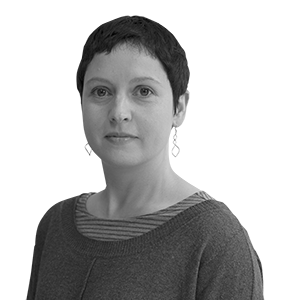How to predict a tsunami?
The Kamchatka earthquake met all the conditions to trigger a tsunami, but the waves were not as high as in previous earthquakes.


BarcelonaHe Wednesday's earthquake off the coast of Russia It is the sixth most intense earthquake ever recorded in the world. With a magnitude of 8.8, one of the highest in history, it is still behind another that occurred in the same Russian region of Kamchatka in 1952, which was magnitude 9. The strongest in history (since records began) is the magnitude 9.5 that occurred in Chile in 1951, with waves reaching up to 10 meters in some places. This Wednesday, however, waves did not exceed 4 meters on the Russian coast.
But not all earthquakes generate tsunamis. To do so, they must occur under the sea, that is, on oceanic tectonic plates. There are also other determining factors: magnitude, depth, and the type of rupture occurring in the plate. In Wednesday's earthquake, all the conditions were met.
"The rupture occurred on the oceanic shelf, at a depth of 20 kilometers—a tsunami can be generated at depths of up to 60 kilometers—with a very high magnitude (8.8), and the type of rupture was also key, because it caused the sudden uplift of one side," said Sara Figueras, from the Cartographic and Geological Institute of Catalonia (ICGC). "If you modify the seafloor very abruptly, this affects the entire water column, because you create a step that wasn't there before, and this creates a wave of water that spreads out," adds Eulàlia Masana, a paleoseismology expert at the Faculty of Earth Sciences at the University of Barcelona (UB).
This wave, which in the open ocean can advance at 800 kilometers per hour, does not spread with the same energy in all directions, that is, it is not completely concentric, but will be stronger in the direction in which this step was generated. Therefore, the threat will be greater for countries that are in that path. This could explain why there have been higher waves in Hawaii than in Japan, although the latter is much closer to the epicenter of the earthquake.
Current technology allows for rapid detection of seismic movements and "immediate determination of what type of rupture has occurred (in addition to the magnitude and depth) to know whether or not to activate a tsunami alert," explains Figueras. These calculations and warning systems, which did not exist when the earthquake occurred, the devastating Sumatra tsunami in 2004, allow authorities in each country to have an approximate estimate of the height a tsunami could reach on their coasts. The altitude varies in each location because it depends on the specific topography of the coast and the topography of the seafloor along the tsunami's path up to a given point: as the seafloor becomes shallower, the wave slows down. These calculations have made it possible to quickly establish the alert levels in different locations in the Pacific this Wednesday, because detailed maps of the seafloor and coastal topography of this ocean are now available, "which is not the case with others like the Indian Ocean," Figueras points out. These predictions, which as of this morning "already spoke of 3-4 meters on the Russian coast, 1-3 meters in Japan and Hawaii, and up to one meter in more distant areas," adds Masana.
The possibility of strong aftershocks
Wednesday's earthquake occurred on a fault (a rupture in the ground) where "the Pacific tectonic plate and the North American plate meet," Masana explains. "It's not just any fault, because it's a subduction zone where there's a rupture that's stuck, accumulating pressure, and that's hundreds of kilometers long." A point on this fault broke on Wednesday, causing the earthquake, but this is now generating pressure at other points along the fault, "on the edges of this rupture," so it's expected that there may be aftershocks that could also be of high magnitude.
The entire Pacific Ocean coast, both the Asian and American parts, including the Arctic, is known as the Ring of Fire because the confluence of the tectonic plate beneath the Pacific with the various continental plates generates a very high risk of earthquakes. It's no coincidence that the ten strongest earthquakes ever recorded have occurred within this ring of fire.
